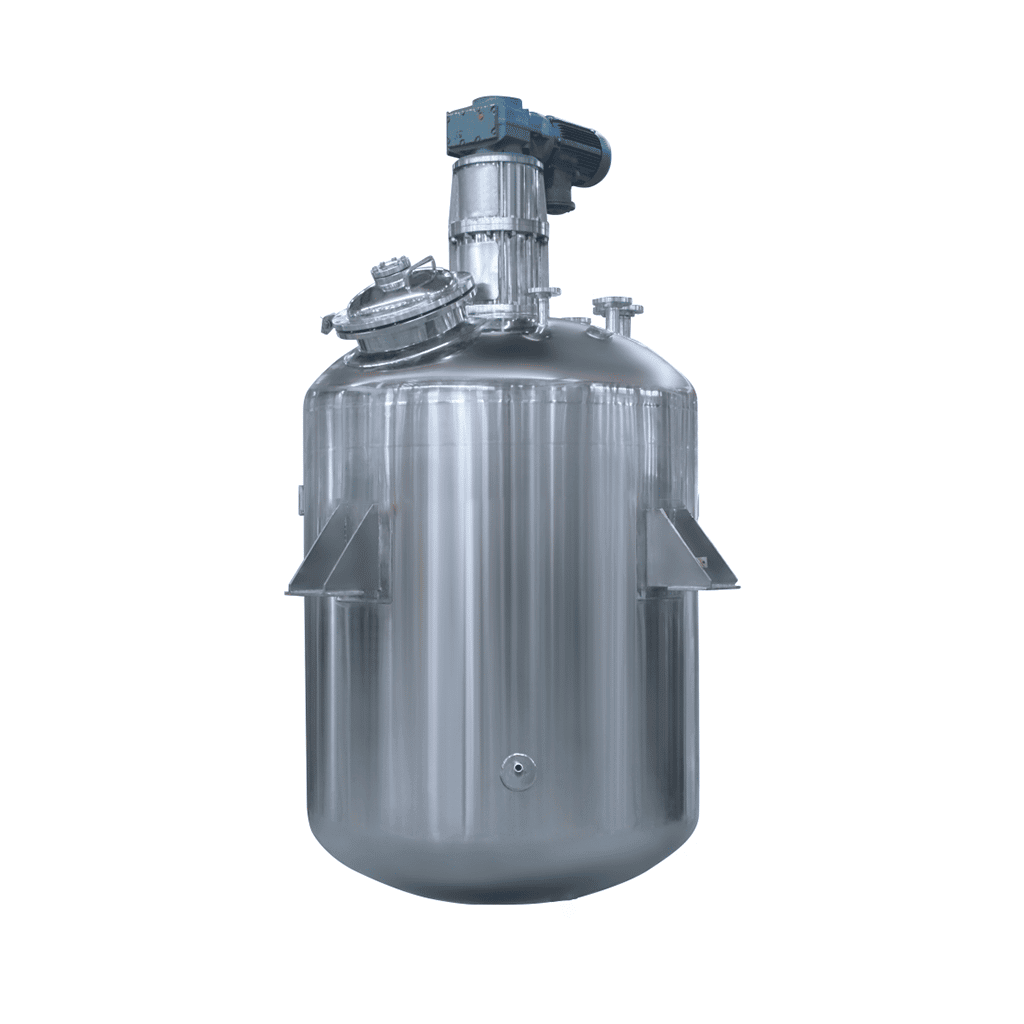
-24-1.jpg)
Stainless Steel Reactor
Stainless Steel Reactor: used in dairy products, sugar, beverages, and other fields
Material
stainless steel (316, 304)
Capacity (L)
10-10000+
Mixing system
anchor, paddle, frame and others
Heating system
electric heating, oil heating and others
A stainless steel reactor is a stainless steel container equipment. The stainless steel reactor consists of a kettle body, a kettle lid, a stirrer, a jacket, a bracket, a transmission device, a shaft seal device, etc. Materials and openings can be made according to user needs and process requirements. Stainless steel reactors are mainly used for stirring, homogenizing, and mixing storage of dairy products, sugar, beverages, food, and various pharmaceuticals.
Request a quoteThe stainless steel reactor can make the reaction medium completely in the static sealing state in the autoclave under the condition of high temperature, high pressure, high vacuum, high speed, suspension, and convection, and safely carry out harsh media such as flammable explosive and highly toxic efficient response.

The stainless steel reactor is a comprehensive reaction vessel, and the structure, function, and configuration accessories of the reactor are designed according to the reaction conditions. The stainless steel reactor has a series of automatic reaction processes, from the initial feeding, to the reaction of the material, to the final discharge after the reaction, all of which can complete the pre-set reaction steps with a high degree of automation. The operation difficulty of the stainless steel reactor is greatly reduced, and important parameters such as temperature, pressure, mechanical control (stirring, blasting, etc.), reactant/product concentration, and other important parameters in the reaction process are strictly and safely controlled.
The materials of chemical reactors are generally carbon-manganese steel, stainless steel, zirconium, nickel-based (Hastelloy, Monel) alloys, glass, and other composite materials, and stainless steel reactors are one of the most commonly used reaction equipment. The chemical reactor is mainly made of stainless steel materials such as SUS304 and SUS316L. The agitators include anchor type, frame type, paddle type, turbine type, scraper type, combined type, etc. Users can choose according to their materials, and the rotating mechanism mainly adopts a cycloidal pinwheel reducer and infinitely variable speed reducer. Or frequency conversion speed regulation, etc., can meet the special response requirements of various materials.
In the reaction process of chemical reactors, high pressure is generally used. To ensure the safe progress of the entire reaction process, the sealing device of the stainless steel reactor plays an important role. The sealing device of the stainless steel reactor has sealing structures such as mechanical seals and packing seals to ensure that safety is the first point. The heating and cooling system has the structure of a jacket, half pipe, coil pipe, Miller plate, etc. The heating method of stainless steel reactor includes steam, electric heating, and heat transfer oil to meet the requirements of acid resistance, high-temperature resistance, wear resistance, and corrosion resistance. Craft needs of the environment. It greatly satisfies the user’s experience, and the user can design and manufacture according to the process requirements of the material.
The stainless steel reactor is composed of a kettle body, a kettle cover, a jacket, a stirrer, a transmission device, a shaft sealing device, and support. The stirring forms generally include anchor type, paddle type, turbine type, propulsion type or frame type, etc. When the height-diameter ratio of the stirring device is large, multi-layer stirring blades can be used, and they can also be selected according to the user’s requirements. In the design of RUNGYU’s stainless steel reactor, a jacket device is set outside the reactor wall, a heat exchange surface is set inside the reactor, or heat exchange can be carried out through external circulation. When purchasing stainless steel reactors, users can choose according to their own needs. , you can also contact our engineers directly, our engineers will also provide the best solution the first time.
The heating methods of the stainless steel reactor include electric heating, hot water heating, heat transfer oil circulating heating, far-infrared heating, outer (inner) coil heating, etc. The cooling methods are jacket cooling and inner coil cooling in the kettle, in the form of stirring blades Wait. The support seat has a support type or an ear type of support. Gear reducers should be used when the speed exceeds 160 rpm. The number of holes, specifications, or other requirements.
Can be designed and produced according to user requirements. The heating and cooling of the reaction medium adopt the built-in plate heat exchanger, the heat transfer coefficient is 40% higher than that of the traditional coil heat exchanger, and the structure of the plate heat exchanger is relatively compact, which is conducive to the arrangement in the reactor with large volume Sufficient heating and cooling area makes the resin synthesis reaction process more uniform and stable. Reasonable utilization of heat energy, selection of good process operating conditions, strengthening of thermal insulation measures, improvement of heat transfer efficiency, minimizing heat loss, and fully comprehensive utilization of waste heat or heat generated after the reaction. The application of heat pipe technology will be the development trend of the reactor in the future.




